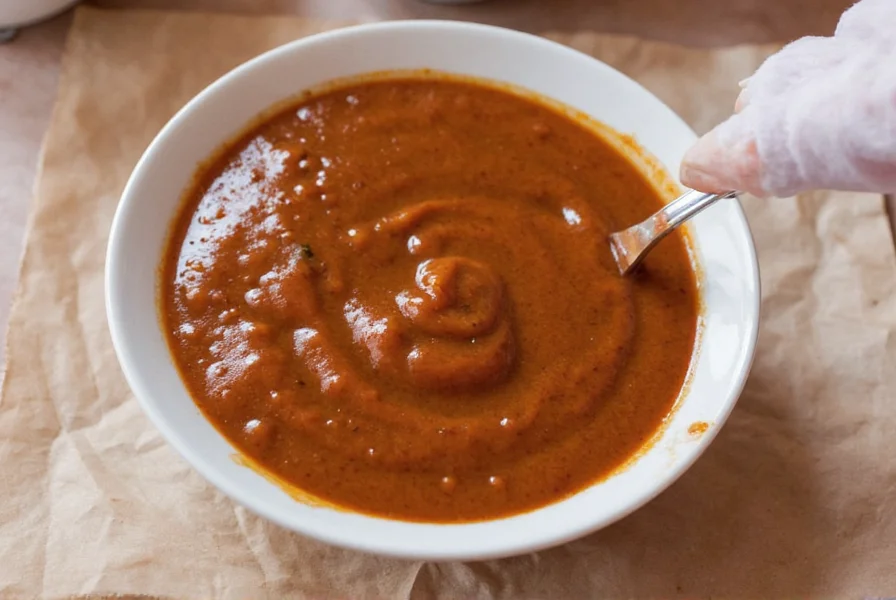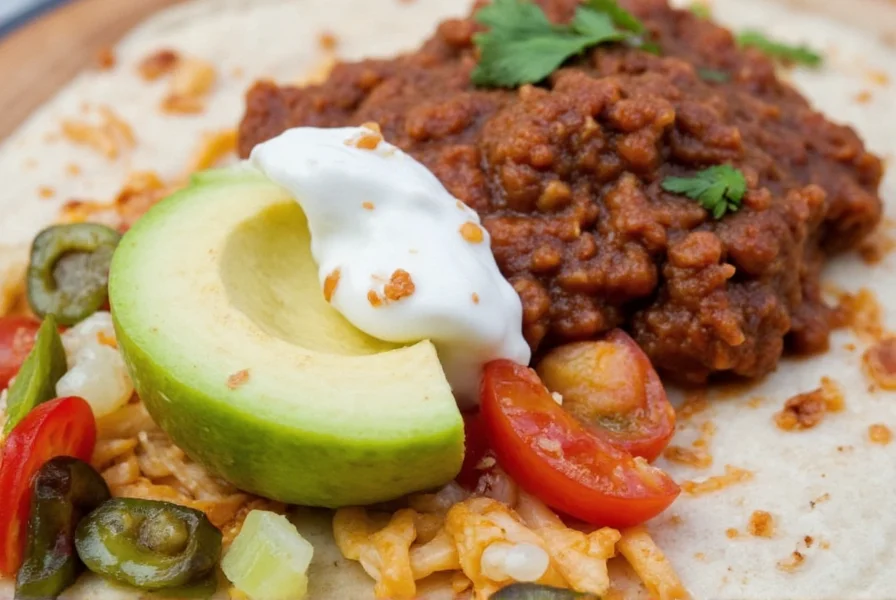Smoky Secrets: Crafting the Perfect Chipotle en Adobo Sauce at Home (Plus Pro Tips!)
If you're a spice lover with a soft spot for smoky depth and a lingering kick, then chipotle en adobo sauce needs to be your new best friend. But forget those store-bought jars — we’re diving into how to make this rich, flavorful sauce right in your own kitchen. Whether you're an adventurous home cook or a culinary pro looking to up your flavor game, this guide has everything you need to master the art of chipotle en adobo.
Table of Contents
- What Is Chipotle en Adobo?
- Why Make It at Home?
- Ingredients You’ll Need
- Step-by-Step Recipe
- Pro Tips and Variations
- How to Use Chipotle en Adobo Sauce
- Buying Guide for Ready-Made Versions
- Frequently Asked Questions
- Conclusion
What Is Chipotle en Adobo?
Let’s start with the basics. Chipotle en adobo is a Mexican condiment made from smoke-dried jalapeños (called chipotles) that are rehydrated and simmered in a tangy, slightly sweet red sauce known as adobo. The result is a thick, smoky, mildly spicy sauce with a complex flavor profile that can elevate everything from tacos to marinades.
The History Behind the Heat
Originating in southern Mexico, particularly in the state of Morelos, chipotles have been used for centuries not only for their flavor but also for their preservative qualities thanks to the drying and smoking process. The addition of the adobo sauce — typically a blend of vinegar, garlic, tomatoes, and spices — helps preserve the chilies even longer and enhances their flavor significantly.
Why Make It at Home?
You might ask, why bother making something that's already available in cans? Well, here are some compelling reasons:
- Fresher ingredients: Control exactly what goes into your sauce.
- Taste customization: Adjust the heat level, sweetness, or smokiness to suit your palate.
- Cost-effective: Making larger batches can be cheaper than buying multiple cans.
- No preservatives: Avoid unnecessary additives and artificial flavors.

Ingredients You’ll Need
Before we get into the step-by-step instructions, let’s gather our flavor arsenal. Here’s what you’ll need to whip up a batch of homemade chipotle en adobo sauce:
| Ingredient | Quantity | Purpose |
|---|---|---|
| Dried chipotle chilies | 8–10 pieces | Main source of smoky, spicy flavor |
| Tomatoes | 4 medium | Base for richness and color |
| Garlic cloves | 5–6 | Adds savory depth |
| White vinegar | 1/4 cup | Brightens the flavor and preserves |
| Brown sugar | 2 tablespoons | Balances the acidity and adds depth |
| Cumin | 1 teaspoon | Earthy, aromatic backbone |
| Oregano | 1 teaspoon | Traditional herb for earthy notes |
| Salt | To taste | Enhances all flavors |
| Water | As needed | Adjust consistency |
Step-by-Step Recipe
Now that you’ve got your ingredients, let’s turn them into that signature smoky sauce!
- Rinse and soak the chilies: Remove stems and seeds if you want less heat. Place chilies in a bowl and pour boiling water over them. Let soak for 30 minutes to rehydrate.
- Roast the vegetables: Preheat oven to 400°F (200°C). Place halved tomatoes and whole garlic cloves on a baking tray. Roast for about 25–30 minutes until charred and softened.
- Blend everything: Drain the soaked chilies. In a blender, combine roasted tomatoes, garlic, rehydrated chipotles, vinegar, brown sugar, cumin, oregano, and salt. Add enough soaking liquid or water to help it blend smoothly.
- Cook down the sauce: Transfer the mixture to a saucepan and simmer over low heat for 20–30 minutes until thickened and flavors meld together.
- Store or use: Let cool completely before transferring to sterilized jars or bottles. Store in the fridge for up to 3 weeks or freeze for longer shelf life.
Pro Tips and Variations
Ready to become a chipotle en adobo wizard? Try these expert-level adjustments:
- Mild it down: Reduce the number of chilies or remove all seeds and inner membranes for a softer heat.
- Boost the smokiness: Add a pinch of smoked paprika or chipotle powder during blending.
- Make it fruity: Toss in a peeled apple or pineapple chunks when roasting for a tropical twist.
- Vegan option: Replace brown sugar with coconut sugar or maple syrup.
- Spice infusion: Add a clove or two of cinnamon bark or a bay leaf while simmering for extra warmth.
Texture Hack
If you prefer a smoother sauce, strain the blended mixture through a fine mesh sieve before simmering. For a chunkier texture, leave it as is or pulse briefly after cooking.
How to Use Chipotle en Adobo Sauce
Once you’ve made a batch (or bought one), don’t limit yourself to just tacos. This versatile sauce can jazz up tons of dishes:
- Marinades: Mix with olive oil, lime juice, and soy sauce for killer grilled chicken or tofu.
- Mayo upgrades: Stir into mayonnaise or Greek yogurt for a spicy dip or sandwich spread.
- Stews & soups: A spoonful adds incredible depth to chili, tomato soup, or lentil stew.
- Eggs: Spiked into scrambled eggs or drizzled over shakshuka for breakfast with flair.
- BBQ sauces: Blend with ketchup, molasses, and cider vinegar for a bold barbecue base.
Buying Guide for Ready-Made Chipotle en Adobo
If time is tight or you're curious about store-bought options, here’s a quick breakdown of popular brands and what makes each stand out:
| Brand | Flavor Profile | Heat Level | Best For |
|---|---|---|---|
| La Costeña | Classic balance of smokiness and tang | Moderate | Everyday cooking and salsas |
| Goya | Lighter, slightly sweeter flavor | Low to moderate | Kids-friendly meals and dips |
| Hatch | Robust, deeply smoky with fresh pepper notes | High | Grilling, gourmet recipes |
| Herdez | Smooth and slightly acidic | Moderate | Enchiladas, rice dishes |
| San Marcos | Thicker texture, more chili-forward flavor | Medium | Hearty stews and bean dishes |
Label Reading Tips
- Avoid preservatives: Look for short ingredient lists with no weird chemicals.
- Oil content: Lower oil content = more concentrated flavor.
- Whole vs. pureed: Whole chilies in adobo are great for chopping into dishes; pureed is ideal for sauces and marinades.
Frequently Asked Questions
Can I use fresh chipotle peppers instead of dried?
Yes, though they won’t have the same intense smokiness. Fresh chipotles are essentially ripe jalapeños, so you’ll miss the traditional drying process that develops deep flavor.
How long does homemade chipotle en adobo last?
When stored in a sealed container in the refrigerator, it lasts about 3 weeks. Freeze in ice cube trays for up to 6 months.
Is there a non-spicy alternative?
Use ancho chilies instead for a sweeter, milder version. They bring similar depth without the heat.
Can I can this sauce for long-term storage?
While possible using proper pressure canning methods, this requires strict safety protocols. If unsure, stick to refrigeration or freezing.
Conclusion
Crafting your own chipotle en adobo sauce is more than just a kitchen project — it’s a flavor adventure. Whether you’re jazzing up weeknight dinners or impressing guests with restaurant-worthy dishes, this sauce opens up a world of smoky possibilities. From the comfort of your pantry to the creativity of your plate, chipotle en adobo is a must-have staple for any spice enthusiast or culinary professional.

So grab those chilies, fire up the blender, and get ready to unlock one of Mexico’s most beloved flavor bombs. Your taste buds will thank you.










 浙公网安备
33010002000092号
浙公网安备
33010002000092号 浙B2-20120091-4
浙B2-20120091-4